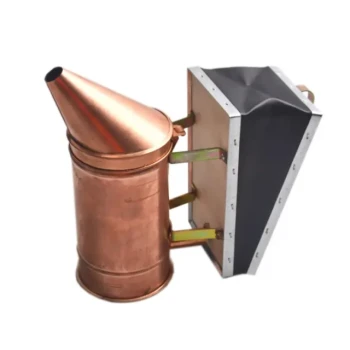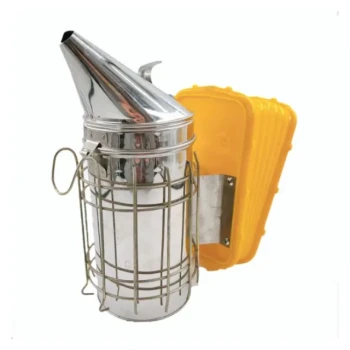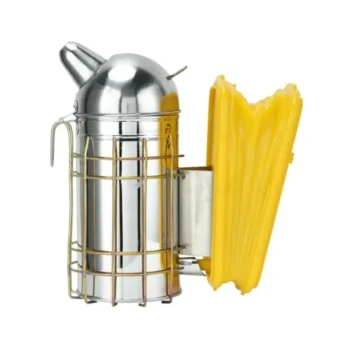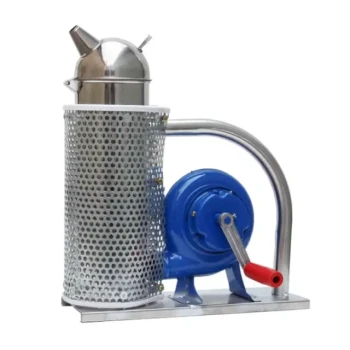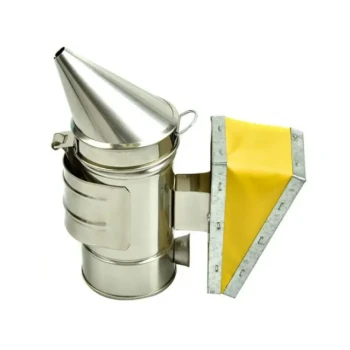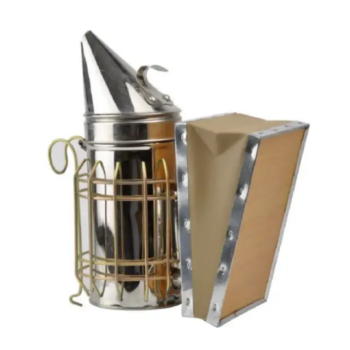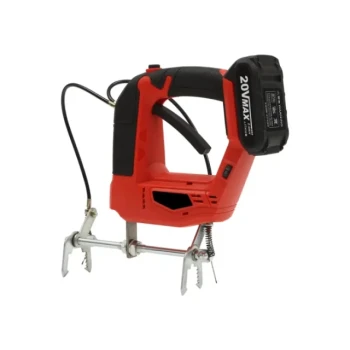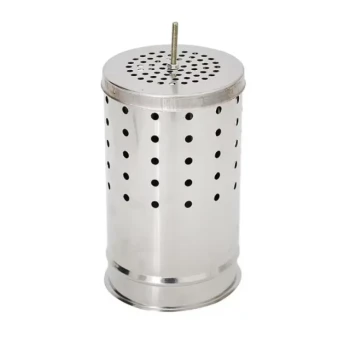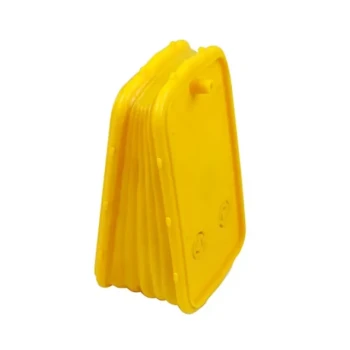At its core, a bee smoker is constructed from simple, durable materials. The body and lid, which contain the fire, are typically made of either stainless steel or galvanized zinc sheet. The device is operated by a hand-pumped bellows, which is made of wood and a flexible material like leather.
The choice between a stainless steel and a galvanized zinc bee smoker is a fundamental trade-off. It balances long-term durability and rust resistance against upfront cost, a key decision for any beekeeper.
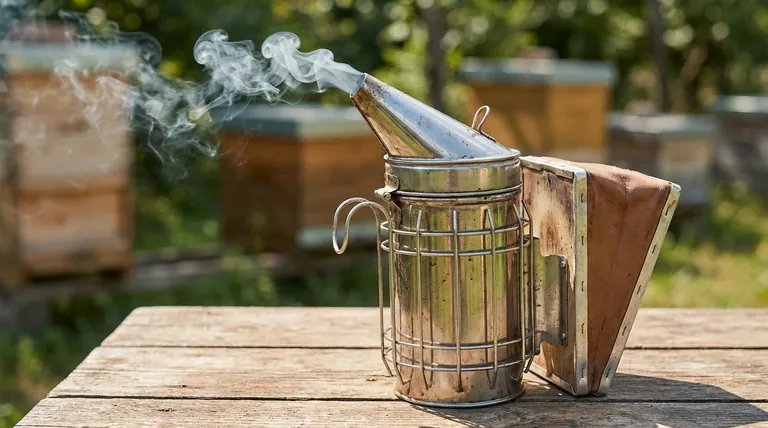
Deconstructing the Bee Smoker: Core Components
A bee smoker is a simple yet elegant tool designed for a single purpose: to generate cool, thick smoke. Each material is chosen to serve a specific function in achieving this goal safely and efficiently.
The Fire Chamber (Body & Lid)
The fire chamber, or canister, is the heart of the smoker. This is where fuel is burned to produce smoke.
The most common materials are stainless steel and galvanized zinc sheet (often 26-gauge). Both are chosen for their ability to withstand high temperatures and resist corrosion.
The Bellows
The bellows is the engine of the smoker. Pumping it forces air into the fire chamber, stoking the fuel and pushing smoke out of the nozzle.
It consists of two wooden boards connected by a flexible, air-tight material, which is traditionally leather. A spring helps the bellows re-inflate after each pump.
The Heat Shield
Virtually all modern smokers include a protective wire cage or shield around the fire chamber.
This critical safety feature prevents the user from accidentally touching the scorching hot canister, preventing burns. It is also made of a heat-resistant metal.
Hardware and Fasteners
Smaller components hold the device together. These include a metal hinge for the lid, a hook for hanging the smoker, and various nails or screws to assemble the bellows and attach it to the fire chamber.
Understanding the Trade-offs: Stainless Steel vs. Galvanized Zinc
While both materials work, the difference between them directly impacts the smoker's lifespan and performance, representing the primary decision a beekeeper makes when purchasing one.
Durability and Longevity
Stainless steel is the superior choice for longevity. It is highly resistant to rust and burnout, even with frequent use and exposure to the elements.
Galvanized zinc smokers are more susceptible to rust over time, especially if the zinc coating is scratched or burns away. They are more likely to develop holes and require replacement sooner.
Cost and Value
Galvanized zinc is the budget-friendly option. Its lower upfront cost makes it an attractive choice for beginners or hobbyists with only a few hives.
While stainless steel models are more expensive, their extended lifespan often provides better long-term value for serious or commercial beekeepers.
Making the Right Choice for Your Apiary
Your choice of smoker depends entirely on your beekeeping goals, frequency of use, and budget.
- If your primary focus is affordability or you are a new hobbyist: A galvanized zinc smoker is a perfectly functional and economical starting point.
- If your primary focus is long-term investment and durability: A stainless steel smoker is the definitive choice that will withstand years of heavy use.
Ultimately, selecting the right smoker is about choosing a reliable tool that fits the scale of your beekeeping practice.
Summary Table:
| Component | Common Materials | Key Function |
|---|---|---|
| Fire Chamber (Body & Lid) | Stainless Steel, Galvanized Zinc Sheet | Contains the fire; withstands high heat |
| Bellows | Wood, Leather | Pumps air to stoke the fire and produce smoke |
| Heat Shield | Heat-resistant Metal (e.g., wire cage) | Protects user from burns |
| Hardware/Fasteners | Metal Hinges, Nails, Screws | Assembles and secures the smoker components |
Upgrade Your Beekeeping Efficiency with the Right Equipment
Whether you're a commercial apiary managing hundreds of hives or a distributor supplying beekeepers, the right smoker is crucial for smooth, safe operations. HONESTBEE provides durable, wholesale-focused beekeeping supplies—including high-performance stainless steel and cost-effective galvanized zinc smokers—designed to meet the demands of professional beekeeping.
Let us help you equip your operation with reliable tools that last. Contact HONESTBEE today for bulk pricing and expert support!
Visual Guide
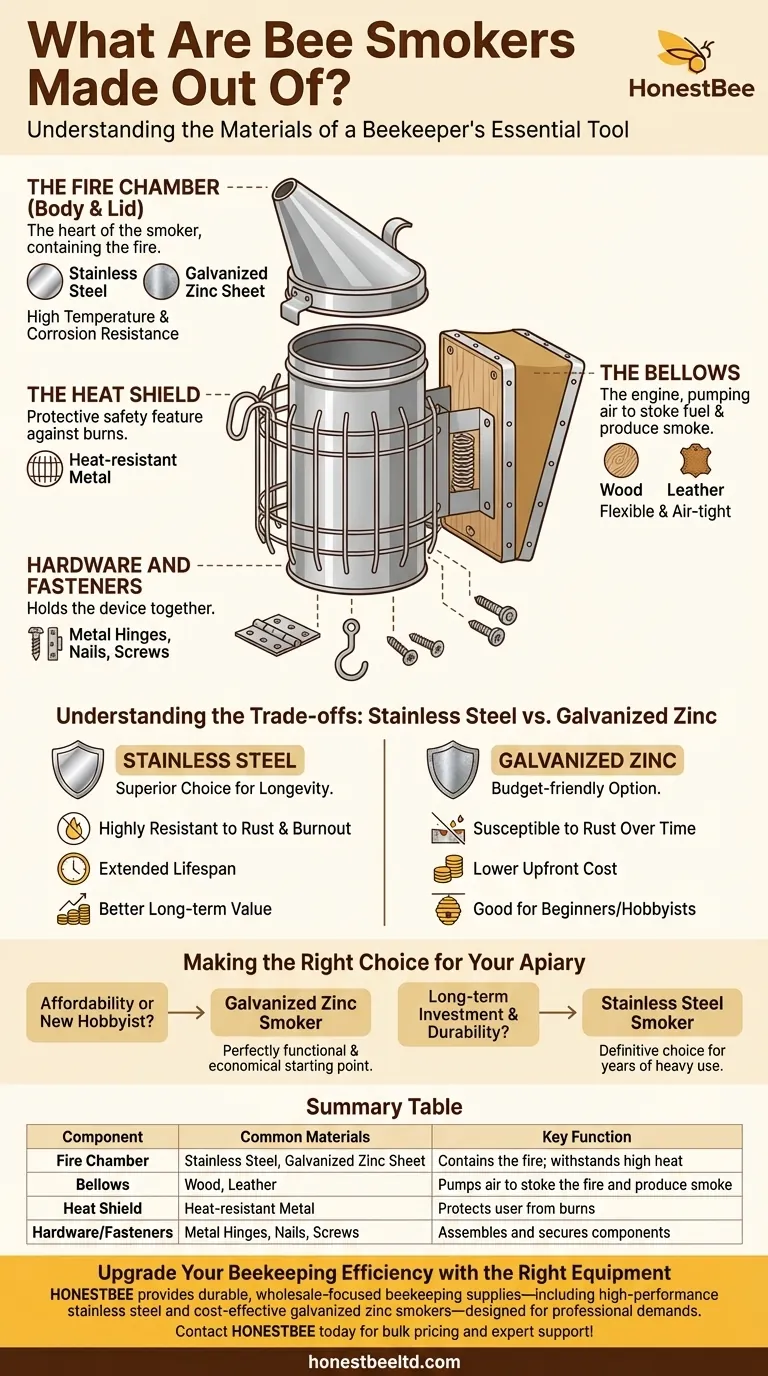
Related Products
- European Stainless Steel Bee Smoker for Honey Bee Hive
- Premium Traditional Copper Bee Smoker with Bellows
- Professional Bee Smoker with Elongated Spout and Durable Bellows for Beekeeping
- Heavy-Duty Bee Smoker with Durable Plastic Bellows for Beekeeping
- Heavy Duty Manual Bee Smoker Blower for Beekeeping
People Also Ask
- Can you use too much smoke on bees? The Right Way to Use a Bee Smoker for Calm Inspections
- What are the features of a recommended bee smoker? A Guide to Safety, Durability & Performance
- What are the key benefits of using a bee smoker? Master Hive Inspections Safely and Efficiently
- What are the benefits of cleaning a bee smoker? Ensure Hive Safety and Bee Health
- What are the differences between stainless steel and galvanized steel bee smokers? Choose the Right Smoker for Your Apiary

